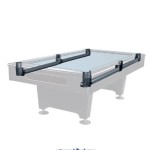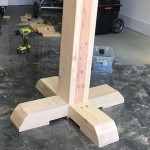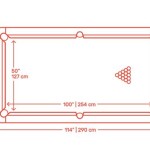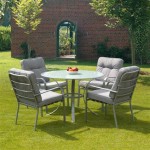Understanding Standard Bar Height Table Dimensions
Bar height tables, also known as pub tables or bistro tables, have become increasingly popular in both residential and commercial settings. Their elevated height fosters a more social and casual atmosphere, making them ideal for entertaining, dining, or simply relaxing. Understanding the standard dimensions of bar height tables is crucial when selecting the right table for a given space, ensuring comfort, functionality, and aesthetic appeal. The dimensions encompass the height, width, and depth of the table, each contributing to the overall usability and suitability.
These tables differ significantly from standard dining tables and counter height tables in terms of their dimensions. Standard dining tables typically range from 28 to 30 inches in height, while counter height tables are around 34 to 36 inches. Bar height tables, in contrast, are considerably taller, typically measuring between 40 and 42 inches. This difference in height necessitates the use of bar stools or chairs that are appropriately sized to ensure comfortable seating.
The dimensions of a bar height table are not arbitrary; they are carefully considered to provide an optimal combination of functionality and aesthetics. The height is primarily dictated by the need to accommodate bar stools, allowing for sufficient legroom and a comfortable reach to the tabletop. The width and depth, on the other hand, are often determined by the intended use and the available space. Smaller bar height tables are suitable for compact areas or for use as accent pieces, while larger tables are more appropriate for dining or entertaining larger groups.
Key Considerations for Standard Bar Height Table Dimensions: Height
The height of a bar height table is the most defining characteristic. As mentioned previously, the standard height falls between 40 and 42 inches. This height is designed to be compatible with standard bar stools, which typically have a seat height of 28 to 30 inches. The difference between the table height and the seat height allows for approximately 10 to 12 inches of legroom, considered the optimal range for comfortable seating. Deviating significantly from this height range can lead to discomfort, either forcing individuals to strain to reach the table or resulting in insufficient legroom.
Manufacturers often adhere to this standard height range to ensure compatibility with the vast majority of bar stools available on the market. However, slight variations can occur. Some bar height tables may be slightly shorter, around 38 or 39 inches, while others may be slightly taller, reaching 43 or 44 inches. These variations are often intentional, catering to specific design preferences or accommodating individuals with different height requirements. In such cases, it is crucial to select bar stools that are appropriately sized to complement the table height.
When selecting a bar height table, it is advisable to measure the height of existing bar stools or, if purchasing new stools, to consider the table height when making the selection. A mismatch in height can not only be uncomfortable but can also compromise the overall aesthetic appeal of the space. Furthermore, the height of the table should be considered in relation to other furniture in the room. A bar height table that is excessively tall can appear disproportionate and visually overwhelming, while a table that is too short may seem insignificant and out of place.
The structural integrity of a bar height table is also intrinsically linked to its height. Due to their elevated stature, these tables are more susceptible to wobbling or instability. A well-designed bar height table incorporates features that enhance stability, such as a sturdy base, crossbars, or adjustable feet. The materials used in the construction of the table also play a significant role in its stability, with heavier materials generally providing greater resistance to tipping or movement.
Key Considerations for Standard Bar Height Table Dimensions: Width and Depth
The width and depth of a bar height table are primarily determined by its intended use and the available space. These dimensions dictate the amount of surface area available for dining, entertaining, or other activities. Smaller bar height tables, typically with a width and depth of around 24 to 36 inches, are well-suited for compact spaces such as apartments, small kitchens, or balconies. These tables can serve as accent pieces or provide a cozy spot for enjoying a drink or snack.
Larger bar height tables, on the other hand, can range from 48 inches to over 72 inches in width and depth. These tables are more appropriate for accommodating larger groups or for use as a primary dining surface. They are commonly found in restaurants, bars, and other commercial settings where ample seating and surface space are required. The shape of the table also influences its width and depth. Round bar height tables, for example, have a diameter that determines the overall surface area, while rectangular or square tables have distinct width and depth measurements.
When selecting the width and depth of a bar height table, it is essential to consider the number of people who will typically be using the table. A general rule of thumb is to allow for at least 24 inches of width per person to provide comfortable seating. The depth of the table should also be sufficient to accommodate plates, drinks, and other items without feeling cramped. In addition to the practical considerations, the width and depth of the table should also be aesthetically pleasing and proportional to the surrounding space.
The materials used in the construction of the table also affect the perceived width and depth. A table with a thick, solid wood top will appear more substantial and visually impactful than a table with a thinner, lighter top. Similarly, the base of the table can influence the overall impression of size. A pedestal base, for example, can create a more open and airy feel, while a four-legged base can provide a more grounded and stable appearance. The design of the table should complement the existing décor and create a cohesive and harmonious look.
Key Considerations for Standard Bar Height Table Dimensions: Shape and Style
Beyond the standard height, width, and depth, the shape and style of a bar height table are significant factors in its overall design and suitability for a given space. The shape of the table can influence the flow of traffic, the seating arrangement, and the overall aesthetic appeal. Common shapes for bar height tables include round, square, rectangular, and oval. Each shape has its own unique advantages and disadvantages, depending on the intended use and the available space.
Round bar height tables are particularly well-suited for creating a social and intimate atmosphere. The circular shape encourages conversation and allows for easy interaction among seated individuals. Round tables are also generally space-efficient, as they can be easily placed in corners or smaller areas. However, round tables may not be ideal for accommodating large groups or for providing ample surface space for dining.
Square and rectangular bar height tables offer a more formal and structured appearance. These shapes are often preferred for dining or for use as a workspace. Rectangular tables, in particular, can accommodate a larger number of people and provide ample surface space for multiple tasks. Square tables offer a balance between space efficiency and functionality, making them suitable for both small and large spaces. However, square and rectangular tables may not be as conducive to conversation as round tables.
The style of a bar height table can range from traditional to contemporary, reflecting the overall design aesthetic of the space. Traditional bar height tables often feature ornate details, carved legs, and rich wood finishes. Contemporary bar height tables, on the other hand, typically have clean lines, minimalist designs, and sleek metal or glass accents. The style of the table should complement the existing furniture and décor, creating a cohesive and harmonious look.
The materials used in the construction of a bar height table also contribute to its overall style. Wood, metal, glass, and stone are common materials used in bar height table construction, each offering its own unique aesthetic qualities. Wood tables provide a warm and inviting feel, while metal tables offer a more industrial and modern look. Glass tables create a sense of openness and airiness, while stone tables provide a sense of durability and sophistication. The choice of materials should be carefully considered to ensure that the table complements the surrounding environment.
Ultimately, the selection of a bar height table involves considering a confluence of factors including height, width, depth, shape, and style. Paying careful attention to these dimensions and aesthetic considerations ensures the selection of a table that is both functional and visually appealing that contributes to a comfortable and inviting space.

Redress
Stool Heights Dimensions Drawings Com

Contract Chair Co Bar Table Design Kitchen Layout Plans Restaurant Seating

What Is Standard Counter Height Bar Table Wfmo

Dimensions For Bar Counter Kitchen Table Breakfast

Bar Table Height Cm Google Search Stool Guide Kitchen Stools Island

In The Know Stool Height Guide Bar Vs Inside Out Contracts

Dining Claridge Bar Height Pub Table Rustic

In The Know Stool Height Guide Bar Vs Inside Out Contracts

Bar Height Table Dimensions Google Search Stool Guide Rustic Living Room Cabinets








